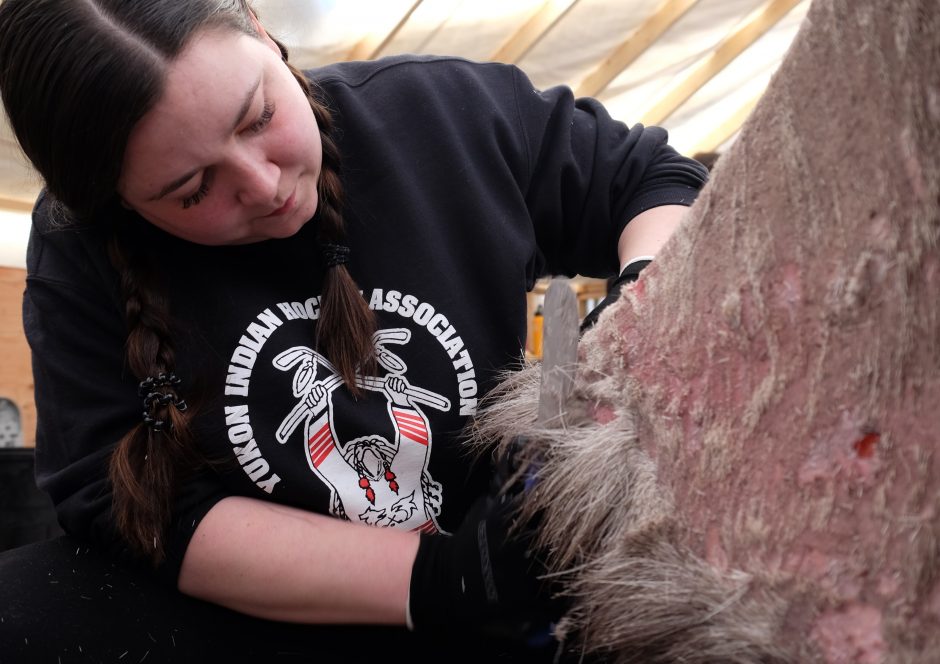The smell hits you as you unzip the door to the canvas wall tent — blood and animal musk. The ground is covered with plastic tarps and piles of moose hair. Two moose skins at different stages of preparation are draped over wooden stands made from vertical pieces of 4x4. A third skin sits in a blue bucket with a milky solution.
The sun is beating down on the tent and a fire is burning inside the wood stove. It’s cozy.
This is where Indigenous youth are learning to prepare and tan moosehide. It’s part of a two-week spring break camp for 12- to 17-year-olds put on by the Kwanlin Dün First Nation at its Jackson Lake Healing Camp.
The camp is in the hills about 20 kilometres from Whitehorse and surrounded by snow-capped peaks.
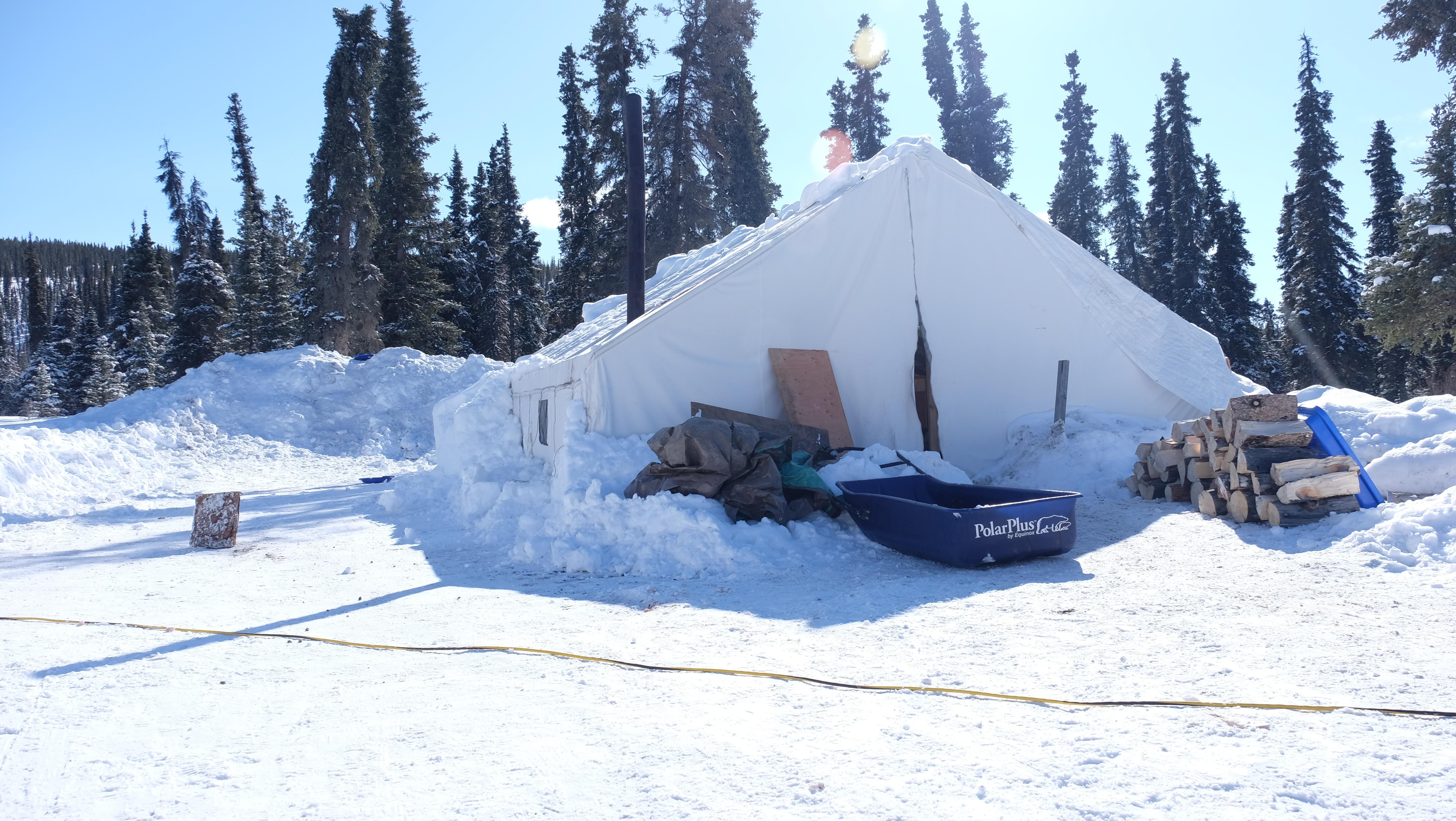
Sharing knowledge
There are several sessions running at a time and campers are free to roam to whichever grabs their interest, says Kaitlyn Charlie, the youth recreation co-ordinator for the Jackson Lake Wellness Team.
“They’re not forced to learn something, which means you’re going to be way more open to it. If you’re actually into it, you’re going to learn so much more from that,” she said.
Besides moosehide tanning, the camp offers other cultural activities like setting rabbit snares, snowshoeing, sewing, painting, and looking at a lynx on a hide stretcher.
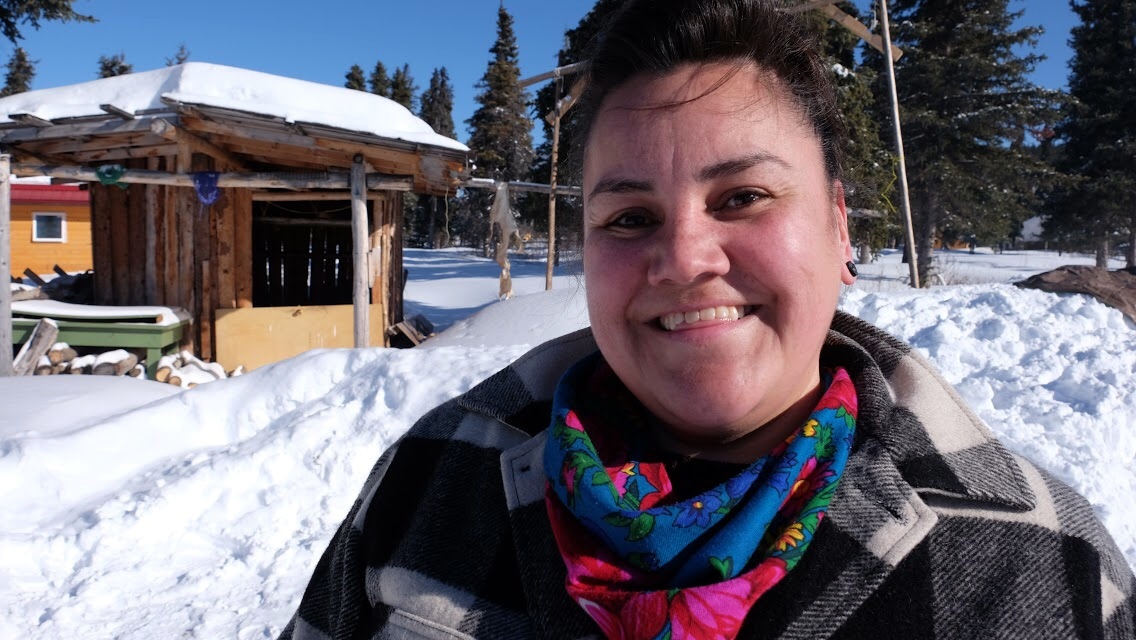
Charlie and her team are trying to keep the camp easily accessible to First Nations youth in the Whitehorse area. The two-week program is free. Kids are offered rides to the camp, and there is extra winter gear if campers don’t have their own.
For Charlie, a 35-year-old Kwanlin Dün citizen who was born in Whitehorse but grew up in Victoria, the chance to organize the camp is “unbelievable.”
There are nine elders — fluent in their language and traditional skills — teaching campers what they know, says Charlie.
“It’s just such a loving, caring way of sharing information that they have.”
“They are so open to share. So willing to impart knowledge and be participants in the knowledge sharing, not just speak to people about it, they’re actually in it,” said Charlie.
“It’s just such a loving, caring way of sharing information that they have."
Information that’s not lost on campers.
16-year-old Tamika Charlie spent a good part of the first week in the arts cabin — sewing and beading a lighter case, and painting.
She says it’s a good experience to learn from elders about the way things used to be done.
Seven-year-old Hunter Sternberg says rabbit snaring is his favourite camp activity.
“We went setting snares for rabbits and we didn't quite get them, but we saw fresh tracks on the way back. The rabbits are sure lucky but there are lynx up there,” he said.
Meet 'Moosehide Margaret'
“Margaret, do we cut the hair off this part?”
Back inside the canvas tent, Margaret Douville, whose Tlingít name is Wat.sî, is busy answering questions from inexperienced tanners.
Dressed in a dark green rain jacket and black rubber boots, she takes the time to check on everyone.
“Hey, you’re tall. You can help hang up the hide,” said Douville to a passing camper.
“Make sure you come grab me when you’re going to do it so I can make sure you’re doing it right.”
‘Get your moosehides and caribou hides here, Moosehide Margaret is here!'
The 64-year-old has been teaching how to tan moosehides in communities across Yukon, in Atlin, B.C. and even Kugluktuk, Nunavut.
Charlie describes Douville as a “world expert” in moosehide tanning.
“When people found out that I was here doing moosehide tanning course, moosehides started coming in. ‘Get your moose hides and caribou hides here, Moosehide Margaret is here,’” she said.
Douville says even though campers are in and out of the tent, they know she’s there’s working on the hides and they’re still learning.
“Even them young girls, they take a knife and start cutting the hair off. That’s one of the things they won’t forget,” she said.
“I don’t see them walking around like this,” she added, her head down, pretending to text.
“I just hope this art is not going to go under, gotta keep it alive."
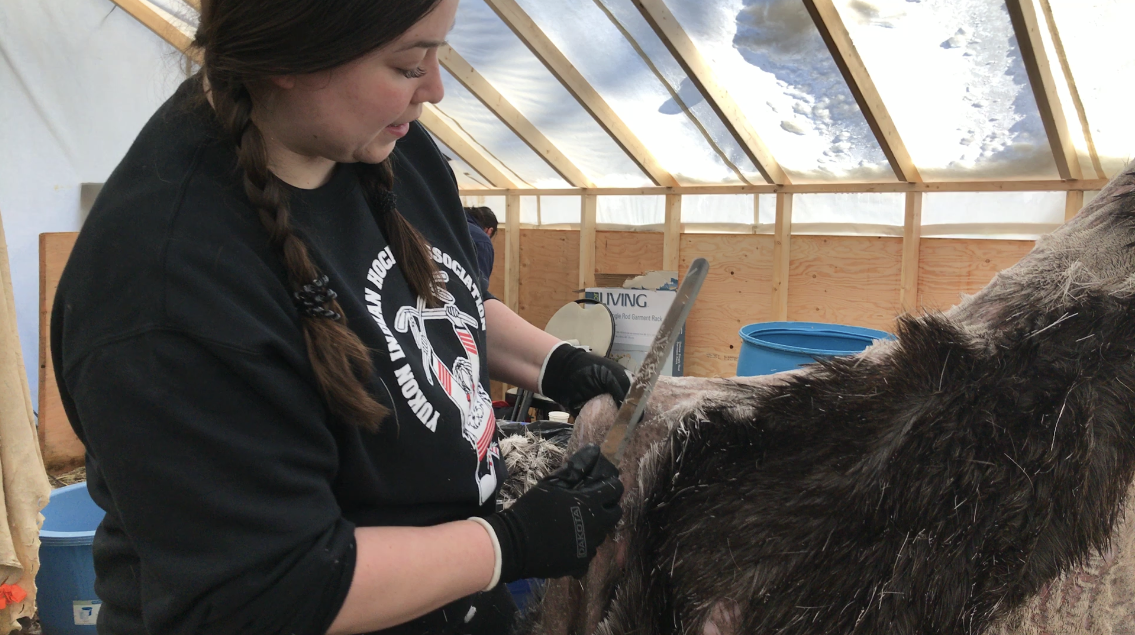
One young woman learning from Douville is Courtney Wheelton.
Wheelton has helped work on a few hides, but the one she’s cutting the hair from today is the first she's working on from beginning to end. When it's done, she hopes to make a graduation vest for her little brother.
She says she can’t even describe what it’s like to have the chance to work with Douville.
“When I heard that Margaret was out here, I thawed my hide and got ready,” she said.
Douville says she’ll come and check on Wheelton in 60 years and say, “Doing good, Courtney.”
Just like Colonel Sanders' secret recipe
When Douville teaches moosehide tanning, she brings skins at different stages because it’s a process that can take a year from beginning to end.
“My tanning solution is made out of moose brains and moose fat,” said Douville. The rest is a secret.
“It’s like Colonel Sanders, he don’t tell you the secret recipe. That’s the way it’s going to be.”
One hide that has already soaked in tanning solution a few times is lying over a fleshing pole. Douville is using her ancestors’ drawknife, one that’s been handed down through five generations, and pulling it down along the hide, helping the tanning solution to soak through.
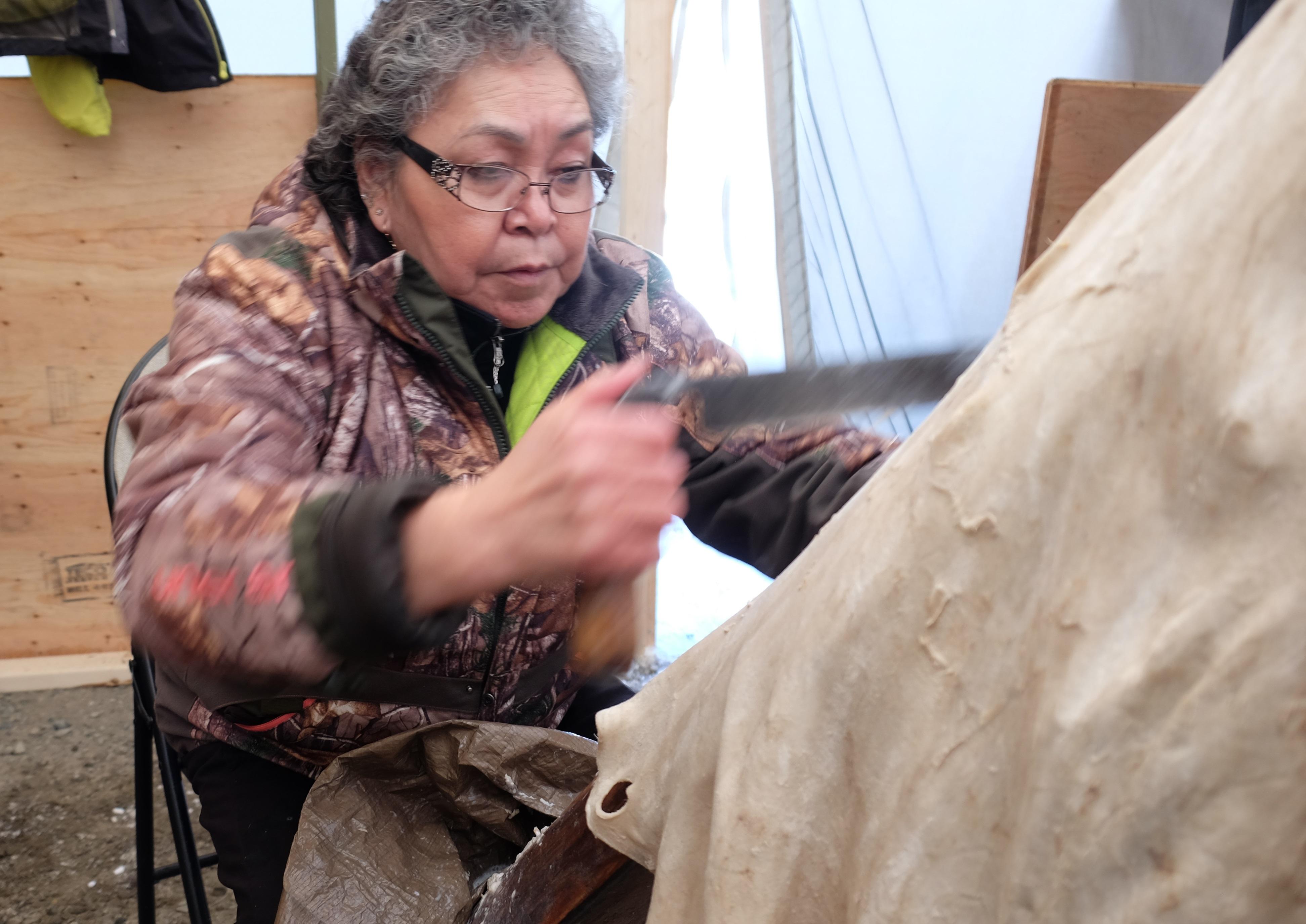
Douville says it’s a process that happens four to five times to help the skin break down.
The last step will be smoking the hide with rotten wood and jack pine cones, something Douville will do months later at her home in Teslin.
Douville learned how to tan hides from her grandparents and her mother when she was 13.
“Many, many times when I’m working on a moosehide, I think about my ancestors. I think about my grandfather, my grandmother,” she said.
Soul satisfying
Before campers pile into vans and head back to Whitehorse, everyone holds hands and stands in a big circle in the dining hall.
One by one, each camper and staff member describes what camp has meant to them in one word.

“Awesome.”
“Blessing.”
“Fun.”
“Educational.”
“Soul satisfying.”
“Heart-warming.”
After, elder Shirley Adamson says a prayer in Southern Tutchone.
She gives a translation when she’s done.
“I sent the words up to our elders and First Mother to let them know we are living for them still.”
